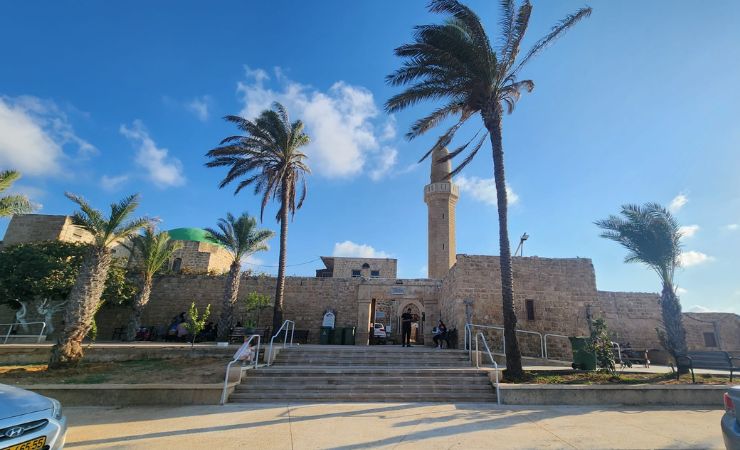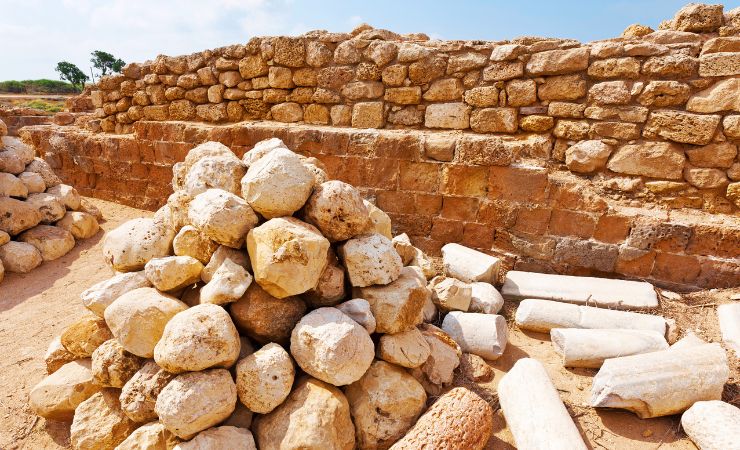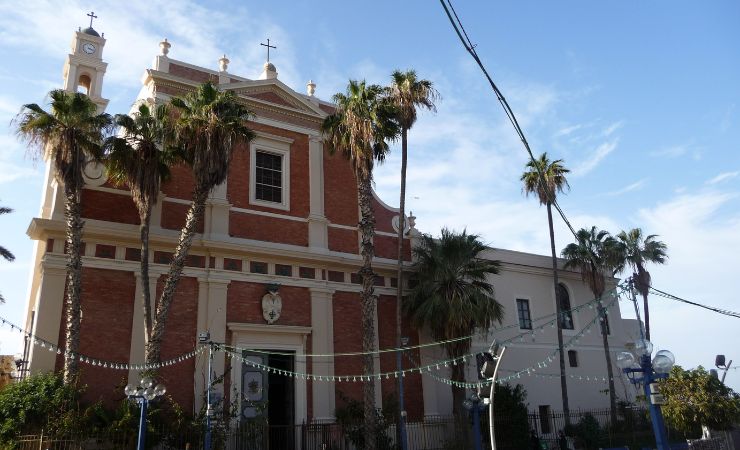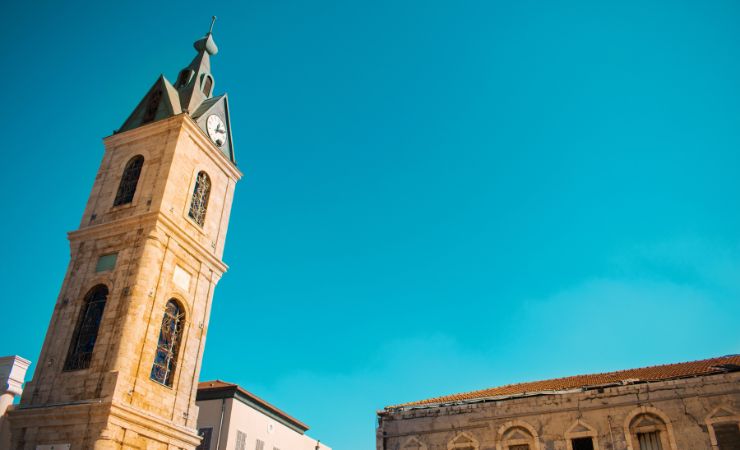Sydna Ali Mosque: History and Legacy
The Sydna Ali Mosque is a remarkable fusion of religious significance and historical intrigue built in honor of Ali Ibn Alim, a Muslim warrior who fought in the Crusades.

Location
The mosque is located just outside the bustling town of Herzliya, around 15 kilometers north of Tel Aviv. It sits on a limestone hill, offering panoramic views of the Mediterranean Sea. Its proximity to the Sidna Ali Beach makes it a perfect stop for those exploring Israel’s coastline.



Historical Context
The Sydna Ali Mosque’s origins date back to the 13th century, when it was built to honor Ali Ibn Alim, a Muslim warrior who, according to tradition, died in battle against the Crusaders near the ancient city of Apollonia. Ali Ibn Alim was believed to be a descendant of the Prophet Muhammad.
Over the centuries, the mosque became an important religious site. In 1481, during the Mamluk period, the mosque was expanded and rebuilt. The Mamluks, who ruled much of the Levant, saw the mosque as a symbol of their Islamic authority in the region. The mosque’s location, perched on a cliff overlooking the Mediterranean, made it both a spiritual and strategic landmark. During the Ottoman era, the mosque became the center of an annual festival celebrating the watermelon harvest.
During the 1948 Arab-Israeli War, the nearby village of Al-Haram was depopulated, leaving the mosque isolated. For several decades, it stood as a solitary structure, with very little use. However, in the 1990s, the mosque was restored, and today it is maintained by a Muslim association.
The Legend of Ali Ibn Alim
One of the most well-known legends about Sydna Ali involves a young girl and a milk vase. One evening, as Ali walked along the seashore, he heard the sound of a child crying. Sitting on the sand beneath a cliff was a young girl, visibly distraught. When Ali asked her why she was crying, the girl tearfully explained that she had been sent to fetch milk for her family, but the vase had broken, spilling the milk into the sand. Understanding the gravity of her situation, as milk was a precious commodity for her poor family, Ali comforted the girl. With a calm smile, he knelt down and prayed. Miraculously, the broken vase reassembled itself, and Ali then reached into the sand, squeezing milk from the grains, filling the vase as if nothing had happened.
Years later, when Ali passed away, he was buried near his home, as tradition dictated. However, the story takes a mysterious turn here. The next morning, Ali’s family was horrified to find his body outside of the grave. They quickly reburied him, but again, the earth rejected his body the following day. This occurred several times, and no one could understand why the ground refused to hold him. According to legend, Ali appeared in a dream to his friend Fouad, a local tea shop owner, and explained that the earth was unwilling to accept him because he had once squeezed milk from it—an unnatural act that disrupted its balance.
Ali told Fouad that the only solution was to build a structure above the ground, where he would rest without being buried. Following his instructions, Ali’s family and friends constructed a small mausoleum, and it is in this above-ground tomb, beneath the watchful gaze of the black stone that once marked his house, that Ali remains to this day, venerated as a saint.
Inside Sydna Ali Mosque
Visitors to the Sydna Ali Mosque will find several key features that blend history, spirituality, and nature:
- Main Prayer Hall: The mosque’s main prayer space, with its simple yet elegant design, is still used for daily prayers.
- Tomb of Ali Ibn Alim: Visitors can pay their respects at the tomb, a focal point for many pilgrims.
- Garden Courtyard: Surrounding the mosque is a serene garden filled with Mediterranean flora, creating a peaceful atmosphere for visitors.
- Coastal Views: The mosque’s position on a high cliff provides breathtaking views of the Mediterranean, making it a prime spot for reflection and photography.
Sources and Additional Information
Nearby Sites
- Apollonia National Park: Located nearby, Apollonia boasts ancient Roman and Crusader ruins, sitting dramatically on cliffs overlooking the sea.
- Sidna Ali Beach: Just a short walk from the mosque, this beautiful stretch of sandy beach is ideal for swimming and relaxing by the sea.
- Jaffa: Only a short drive south, this historic port city is rich in religious and cultural history. Home to Simon the Tanner’s home and St. Peter’s Church.
- Caesarea: About 30 minutes to the north, this ancient Roman city offers well-preserved ruins, including an amphitheater and aqueduct.



